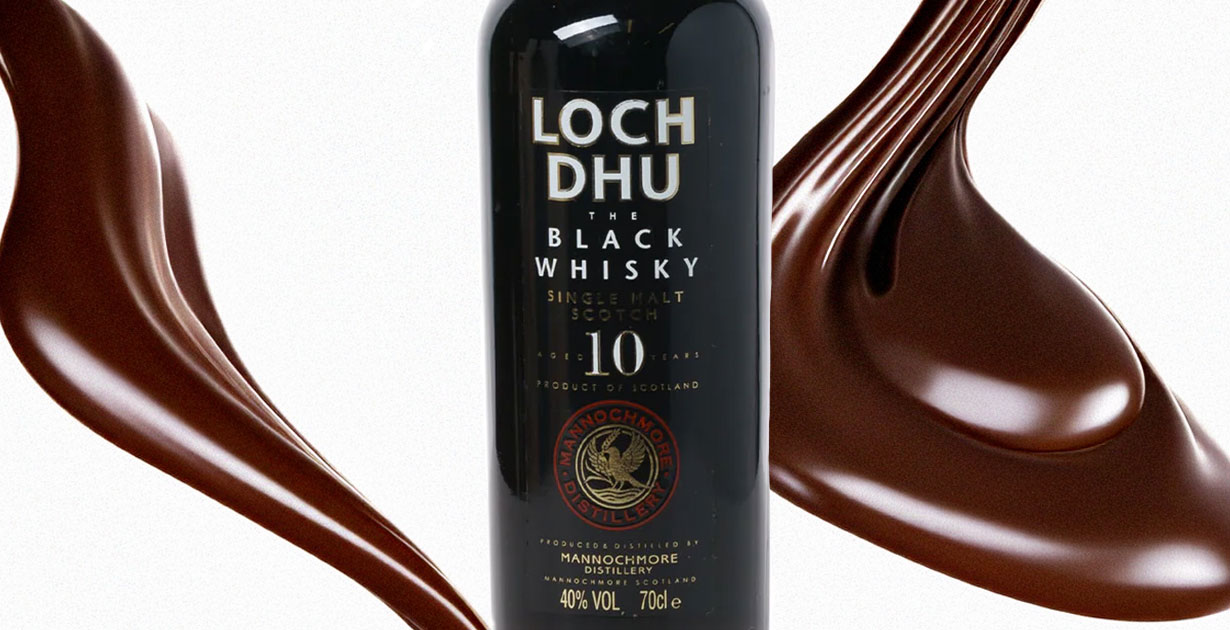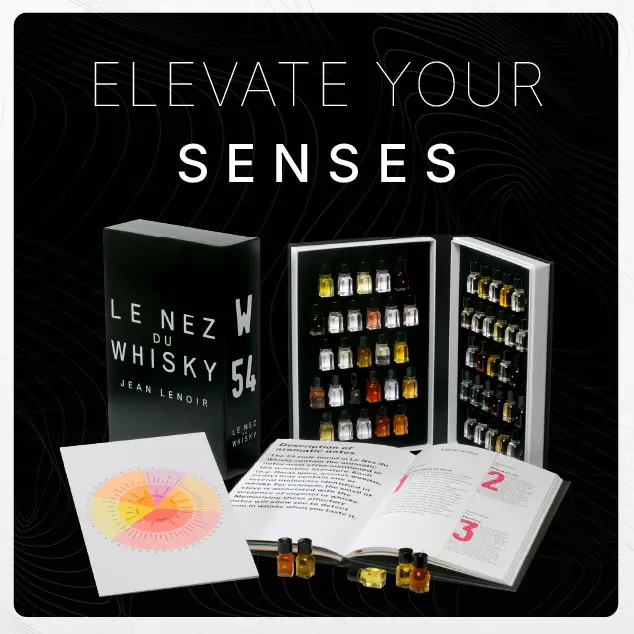
It was black, it was bold, and it baffled the industry. For a short time in the 1990s, Loch Dhu, Gaelic for “Black Lake”, was Scotland’s most divisive single malt. Described as a gimmick by some and a cult classic by others, its story is as dark as the whisky itself.
A Bold Launch from the Moray Firth
Loch Dhu was first released in 1995 by United Distillers, the precursor to today’s Diageo. It was distilled at the Mannochmore Distillery in Speyside, a site that had historically produced light, floral whisky primarily for blends.
Mannochmore itself was something of a sleeper distillery. Built in 1971, it had a modest reputation and little presence in the single malt market. Loch Dhu changed that almost overnight.
Marketed as “The Black Whisky,” Loch Dhu stood out not just for its color, but for its heavily charred oak influence and near-opaque appearance. Bottled at 40% ABV, it was officially released as a 10-year-old expression and came in sleek black packaging that emphasised its dramatic color.
How Did It Get So Dark?
The darkness wasn’t entirely natural.
Loch Dhu owed much of its color to extensive use of heavily charred American oak casks, along with a generous dose of spirit caramel (E150a) for added impact. The result was a whisky so dark it was virtually black in the glass, which was unprecedented for a scotch at the time.
While some whiskies use caramel coloring for consistency, Loch Dhu leaned into it as a defining trait. The color became its identity, but also part of its downfall.
A Marmite Malt
Critics didn’t know what to make of it. Tasting notes ranged from “rich and syrupy” to “overly bitter” and even “burnt rubber.” Flavor-wise, it was nothing like its Speyside neighbours. Where others offered orchard fruit and honey, Loch Dhu was smoky, ashy, and medicinal.
- Some described notes of liquorice, toffee, smoke, and molasses.
- Others compared it to cough syrup, engine oil, or burnt sugar.
It quickly gained a love-it-or-hate-it reputation. Sales were modest at best, and the whisky world largely shrugged.
Discontinued… But Not Forgotten
By 1999, just four years after launch, Loch Dhu was discontinued. Mannochmore resumed its typical light style, later releasing the more conventional Flora & Fauna 12-Year-Old under Diageo’s standardised range.
But while Loch Dhu vanished from shelves, it didn’t disappear from memory. Instead, it began to develop a cult following.
Bottles began to reappear on online forums and at whisky shows, often accompanied by incredulous reviews or nostalgic tales from drinkers who tried it “back in the day.” Prices on the secondary market crept upwards, more from curiosity than acclaim.
Today, an unopened bottle can fetch $300–$600, with collectors intrigued by its oddball legacy.
The Legacy of Loch Dhu
Loch Dhu’s fame, or infamy, has endured far longer than its production run.
In many ways, it was ahead of its time. Today’s whisky market is far more accepting of experimentation: peated Speysiders, red wine casks, heavily charred barrels, even blackened finishes from brands like Ardbeg or Bruichladdich. In 1995, Loch Dhu stood almost alone in that space.
Its failure commercially also shaped how brands approached risk in whisky design. It served as a cautionary tale about how far you can push a concept before the market pushes back.
Yet for all its faults, Loch Dhu is fondly remembered by a niche crowd who appreciate it not for being great, but for daring to be different.
“The Worst Whisky Ever Made”?
That title has followed Loch Dhu for decades, often unfairly. Many modern drinkers now revisit the whisky with more open minds, and better context.
And maybe that’s the best way to think about it: not a failure, but a curiosity. An experiment in branding, in production, in flavor, that tried something new and walked away with cult status instead of commercial success.
Have you tried Loch Dhu? Would you? Let us know your thoughts on the whisky that refuses to be forgotten.
Read the full article at The Curious Case of Loch Dhu: Scotland’s Black Sheep Whisky
